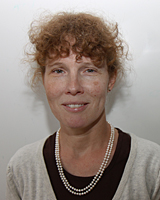Touchpads can be used for patient information
When a cancer has been diagnosed, surgery is often urgently required. To quickly get an overview of the information available about a patient, it is not always adequate with case records and verbal communication. KTH researcher Kristina Groth, together with colleagues has developed a communication tool that runs on touchpads (such as Ipads) and which very quickly provides physicians with an overview of the situation.

“If the doctor does not have all of the information available, there is a risk that he will make the wrong decision. This may lead to serious complications for the patient and longer hospital stays, and possibly multiple surgeries. This in turn becomes expensive. By making the information that is available visible, we can increase the quality of care, and also cover up for doctors who are not there, says Kristina Groth, senior lecturer at the School of Computer Science and Communication at KTH.
For this purpose she and her project group have created an IT-based tool which she calls the Work Record, a kind of decision support system that can be run on an Ipad. The tool follows the patient throughout the entire care chain, from referral and diagnosis to decision, surgery and rehabilitation.
“The more accurate the information is from the start, the smoother the nursing care. The Work Record makes visible the patient's needs, and doctors and other health professionals can discuss what is essential instead of talking details,” says Kristina Groth.
She adds that medical records can as a tool sometimes be quite blunt, and often contain the same information several times over in the form of repetitions.
“The fact that it runs on touchpads with a touch interface is important because in health care now there is a lot of talk about team-based care. With touch screens it make it easier to cooperate, whether you're a surgeon, paediatrician, or nurse,” says Kristina Groth.
When the Work Record was being developed, the project focused on the care of patients who were seriously ill with diseases of the liver, pancreas and stomach/oesophagus. It requires a high degree of competence to make a decision to carry out the necessary operations; this makes the Work Record an excellent communication tool to discuss previous experience and to transfer knowledge.
“There is so much that is only communicated verbally in health care today. It's good, but care can be made even more effective and faster through a means of communication that uses images and the way that the Work Record offers,” says Kristina Groth.
For more information, contact Kristina Groth at 08 - 790 62 79 or kicki@nada.kth.se.
Peter Larsson

